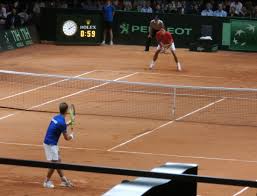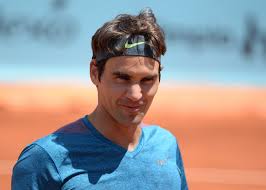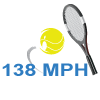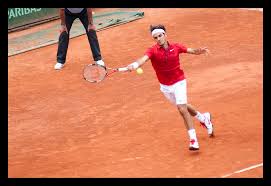Roger Federer erased the time-theft boundary between the clay and grass in the Madrid Masters.
Roger Federer, it appears, can apply grass court aggression successfully onto the clay. His 6-2, 6-3 route of Richard Gasquet in the second round of Madrid Masters was a masterclass on playing aggressively on the clay. It seems Federer became even more aggressive because of his prolonged absence from the surface.
Roger Federer erased the time-theft boundary between the clay and grass.
A three years absence is long enough to feel a little rusty and struggle for balance and poise on the clay. Roger Federer, however, glided on the clay as he does on hard and grass courts. He didn’t feel the ever-so-touted need to change his game to suit the vagaries of the surface. Roger hugged the baseline and took the balls early and on-the-rise to make life difficult for Richard Gasquet who wields a long backswing and, therefore, needs time to strike with efficacy. Gasquet, for the most part, was deprived of the time he needed to take the big cut on the ball. No player takes time away better than the Maestro and, Federer erased the time-theft boundary between the clay and grass, against Gasquet.

Roger Federer’s on-court variation is spellbinding.
While defying the irrefutable time-theft laws of quantum tennis, Federer also came up with the usual jaw-dropping shot-making we expect from him. The viewers enjoyed a few disguised drop-shots from the baseline, and one even on the return of serve. Roger’s serve was on song and delivered when needed. He clocked seven aces to Gasquet’s one and won 71% of his first and 79% of his second serves. His slices were effective in altering the rhythm of the points, and the down-the-line and cross-court backhands were penetrative and struck with confidence. Federer, to keep Gasquet real, even snuck in a few serve-and-volley charges, as only he can on the clay. Federer’s variation is incomparable and quite spellbinding.
What changed since Federer’s last clay court match in 2015?
Roger pounced early on the return of serves and was more effective on the returns from the backhand than the forehand. Federer has come a long way since 2016. Back then his preferred return of serve was the slice. In this match, however, he rarely sliced the return-of-serve and, therefore, exerted pressure from the very start of the point. The ability to pounce early on the returns could yield big dividends on the clay. The clay, we believe, affords Roger the extra millisecond, he could use, to be super-aggressive on the returns.

Who’s next for Roger, in Madrid?
Roger Federer has a tough draw ahead and could meet Gael Monfils next. Monfils, as we know, is capable of upsetting anyone on his day. Federer can only hope that it’s not one of Monfils’s days if – and when – they meet. Roger, however, has a 9-4 head-to-head advantage on Monfils and can resist Monfils swagger and brilliance one more time. It will only get tougher from there, because his quarterfinal opponent could either be the brilliant Fabio Fognini who made Nadal look powerless in Monte Carlo just a few weeks ago, or Dominic Thiem who also beat Rafa, quite comprehensively, on Barcelona’s clay, more recently. If the rankings hold, Federer’s semi-final opponent will most likely be Novak Djokovic, with the possibility of a final against Rafael Nadal on Sunday. We are, however, getting ahead of ourselves, and would be happy to see him survive either Monfils or Fucsovics in his next.

